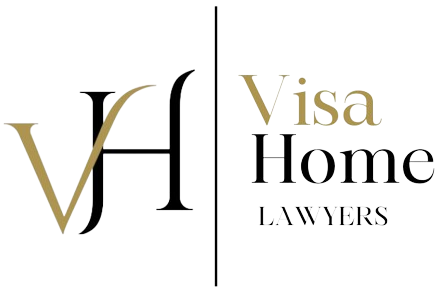Adoption visa
(subclass 102)
Home » Adoption visa (subclass 102)
The Adoption Visa (subclass 102) allows adopted children to join their adoptive parents in Australia. If you have legally adopted a child, this visa enables them to live in Australia permanently. The visa is also available for children who are in the process of being adopted through an intercountry adoption or expatriate adoption. You can only apply for this visa through a paper application.

Who Can Apply for the Adoption Visa (Subclass 102)?
To be eligible for the Adoption Visa (subclass 102), the child must meet specific criteria, including:
1. Expatriate Adoption: In cases of expatriate adoption, the adoption takes place outside Australia without any direct involvement from the Australian government or authorities. To qualify under this route, the adoptive parent must be:
- An Australian citizen, an eligible New Zealand citizen, or a holder of an Australian permanent visa.
- The adoptive parent must also demonstrate that they are not seeking residency in another country to bypass Australia’s intercountry adoption laws.
Expatriate adoptions are usually those where the child has been legally adopted in a foreign country according to that country’s legal processes, and then the parents wish to bring the child to Australia for permanent residency.
2. Intercountry Adoption: The child must have been adopted through an intercountry adoption arrangement, involving an Australian state or territory central authority or an adoption under the Hague Adoption Convention.
3. Child’s Age: The child must be under 18 at the time of adoption, when the application is submitted, and when the decision is made. The child must also be located outside Australia during the application and decision-making process.
4. Adoptive Parent’s Residency: If the child is being adopted under an expatriate adoption, at least one adoptive parent must have lived outside Australia for more than 12 months immediately before submitting the application.
Application Process
The process for applying for the Adoption Visa (subclass 102) involves several steps, and the adoption must meet all eligibility requirements. Below is a brief overview of the key steps:
1. Preparation of Documents: Before applying, ensure that you have all the necessary documents, including:
- The child’s identity documents (passport, national identity card, and birth certificate)
- Adoption papers or an adoption compliance certificate
- Police certificates (for children over 16 years old)
- Proof of relationship between the child and their adoptive parents
- All documents must be certified and translated into English, if applicable.
2. Submit the Application: The application must be submitted on paper. The key forms include:
- Form 47CH: Application for migration to Australia by a child
- Form 40CH: Sponsorship for a child to migrate to Australia
These forms must be sent by post to the Processing Centre in Perth, along with all required documentation and payment for the visa application charge.
3. Wait for a Decision: After submission, your application will be assessed by the Department of Home Affairs. The Department may request additional information or documents during the processing period.
With Adoption visa the child can
- Reside in Australia indefinitely with their adoptive parent.
- Engage in work and study activities within Australia.
- Enroll in Australia’s public healthcare scheme, Medicare.
- Have the option to sponsor their relatives to come to Australia.
- Apply for Australian citizenship, subject to meeting eligibility criteria.
Travel to and from Australia for 5 years
The child is permitted to travel to and from Australia as frequently as desired for a period of 5 years from the visa’s issuance date, provided the travel facility remains valid.
If the child wishes to travel beyond the initial 5-year period:
- They must apply for and receive a Resident Return (RRV) to re-enter Australia as a permanent resident.
- Additionally, they may consider pursuing Australian citizenship. As Australian citizens, they no longer require a visa for entry. Instead, they must obtain an Australian passport for international travel.
Cost of adoption visa
The visa fee for the main applicant is AUD $3,140.
Additionally, there’s an extra charge for each dependent child of the main applicant who applies for the visa.
Further costs may be incurred for health examinations, police certificates, and biometrics.
Apply from
The child must be outside Australia when the application is submitted.
Your obligations
The child is required to enter Australia before the date specified in their grant letter. Typically, the first entry date is set at 12 months from the date of visa grant. It’s crucial for both the child and their accompanying family members to comply with all visa conditions and adhere to Australian laws during their stay.
Eligibility
Be adopted or in the process of being adopted
To be eligible to apply for an Adoption visa (subclass 102), the child must meet one of the following criteria:
- They must have been or be in the process of being adopted through an intercountry adoption or arrangement with the involvement of an Australian state or territory central authority.
- They must have been or be in the process of being adopted through an intercountry adoption between two countries (other than Australia) that are parties to the Hague Convention on the Protection of Children and Cooperation in Respect of Intercountry Adoption (the Hague Adoption Convention).
- They must have been adopted through an expatriate adoption, with no Australian state or territory central authority being involved. The adoption must be by an Australian citizen, an eligible New Zealand citizen, or the holder of an Australian permanent visa. Additionally, they must have been residing outside Australia for more than 12 months immediately before lodging the visa application.
Children adopted under the Hague Adoption Convention
A child may be eligible for Australian Citizenship if the intercountry adoption meets one of the following criteria:
- The adoption is finalised outside Australia under the Hague Convention.
- The adoption is part of a recognised bilateral arrangement.
If Australian citizenship is granted to the child, they can enter Australia using an Australian passport and will not need to apply for a visa.
Expatriate adoptions
The Australian Government, including the Department of Home Affairs, does not play a role in the overseas expatriate adoption process. This means that the government does not provide documents supporting or endorsing expatriate adoptions overseas, such as letters of support or certificates of no objection.
The Australian Government only assesses and decides adoption visa applications, granting visas only if all eligibility requirements are met.
For expatriate adoptees entering Australia, specific eligibility criteria must be fulfilled. These include:
- At least one adoptive parent must have resided outside Australia for more than 12 months immediately before lodging a visa application.
- The adoptive parent must not have resided overseas to avoid Australia’s intercountry adoption laws.
- The adoptive parent must have full and permanent parental rights, with no remaining legal ties between the child and the birth parents.
- The adoption must adhere to the adoption laws of the home country.
It’s advisable to seek independent legal advice both in Australia and in the child’s country of usual residence before proceeding with an expatriate adoption.
Have a sponsor
The child applying for the Adoption visa (subclass 102) must be sponsored by an eligible adoptive parent or prospective adoptive parent. The sponsorship must be approved by the Department of Home Affairs. However, it’s important to note that sponsorship might not be approved if the sponsor or their partner has been charged or convicted of offenses involving children.
Be this age
The child must meet one of the following criteria:
- Be under 18 years of age.
- Be over 18 years of age and financially reliant on the parent who holds the temporary Partner or Dependent Child visa.
Meet the health requirement
The child applying for the Adoption visa (subclass 102) and any dependent child included in their visa application must meet the health requirement set by the Department of Home Affairs. In cases where a health waiver is possible for an adoption visa applicant, the circumstances will need to be carefully examined. It’s also important to note that family members who are not planning to migrate to Australia may also be required to meet the health requirement. This ensures the health and well-being of all individuals involved in the visa application process.
Meet the character requirement
If the child is aged 16 years and older, they must satisfy the character requirement.
Repay debt to the Australian Government
If the child or any member of their family has any outstanding debt owed to the Australian Government, it is necessary to either repay the debt in full or establish a formal arrangement to repay it. This requirement ensures compliance with Australian immigration regulations and financial responsibilities.
Best interests of the child
Your visa may be denied if it is not in the best interests of an applicant under 18.
Conditions
8502 - Not arrive before person specified in visa
You must not enter Australia before the person specified in the visa has entered Australia. This is usually the main visa holder or other relevant person such as your sponsor in the case of a Partner visa.
8515 - Must not marry or enter into a de facto relationship before entry
You are not allowed to marry or enter into a de facto relationship before entering Australia on this visa. Failure to comply with this condition may result in the cancellation of your visa if it is discovered that you were engaged, married, or in a de facto relationship before the visa was granted and you did not inform the authorities. If your contact details change, it is important to update them accordingly.

